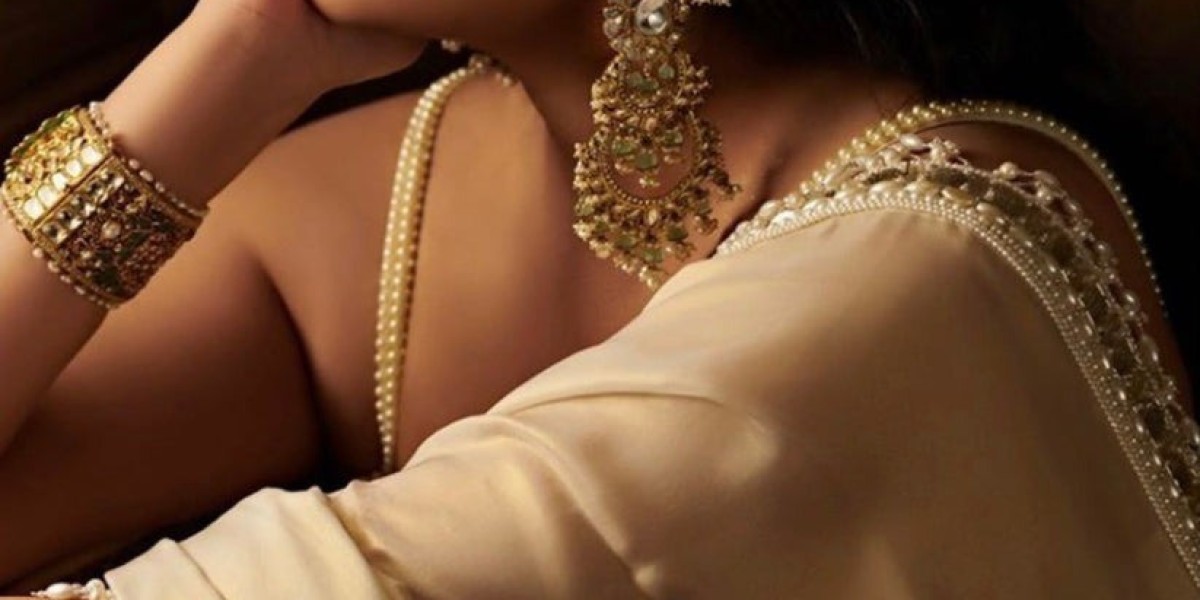In an era of mass production and machine-made garments, handwork lehengas stand as magnificent testaments to the enduring beauty of traditional Indian craftsmanship. These extraordinary pieces represent more than just clothing – they are living embodiments of cultural heritage, skilled artistry, and the timeless human touch that transforms simple fabric into breathtaking works of art. Each stitch tells a story, each thread carries tradition, and every handwork lehenga becomes a cherished heirloom that connects generations through the shared language of exceptional craftsmanship.
The Soul of Handwork Lehengas
Handwork lehengas hold a unique space in the world of ethnic fashion, representing hours of dedication from skilled artisans who pour their hearts into every intricate detail. Unlike mass-produced garments, each handwork lehenga reflects individual artistic flair and cultural knowledge passed down through generations, making every piece truly one-of-a-kind.
The value of handwork lies not just in its aesthetic appeal but in its cultural significance. These techniques like zardozi, resham embroidery, and aari work are inherited skills, lovingly passed down among families and communities. This lineage ensures that every handwork lehenga bears the weight of history and carries forward the legacy of traditional Indian textile arts.
Traditional Handwork Techniques
Zardozi: The Royal Embroidery
Zardozi, meaning "gold embroidery," is one of the most prestigious handwork techniques used in lehengas. This ancient method involves working with metal threads, originally using real gold and silver, to create elaborate designs on silk, velvet, or other rich fabrics. The technique requires exceptional skill, with artisans using specialized needles and frames to create raised, three-dimensional patterns that catch and reflect light beautifully.
Modern zardozi work often incorporates beads, sequins, and sometimes pearls or precious stones alongside the metallic threads, creating layers of texture and luminosity. The process is entirely manual, with each motif carefully crafted by hand to ensure perfection and durability.
Resham and Thread Work
Resham embroidery, using silk threads in various colors, creates some of the most beautiful and intricate patterns found in handwork lehengas. This technique allows artisans to create detailed floral motifs, paisley patterns, and geometric designs that showcase the full spectrum of color and artistic expression.
The beauty of resham work lies in its versatility – it can be used to create both bold, dramatic designs and subtle, delicate patterns depending on the desired aesthetic. The skill required to achieve the perfect tension and stitch consistency makes each resham-worked lehenga a masterpiece of technical excellence.
Aari Work: The Tambour Technique
Aari work, performed using a specialized hooked needle called an aari, creates continuous chain stitches that form intricate patterns. This technique allows artisans to work quickly while maintaining exceptional precision, making it possible to create elaborate designs with fluid, continuous lines.
The aari technique is particularly valued for its ability to create both delicate, fine work and bold, statement designs. The versatility of this method makes it perfect for various types of handwork lehengas, from subtle everyday pieces to elaborate bridal wear.
The Artisan's Journey
Skilled Craftsmanship Passed Down Generations
The creation of handwork lehengas is a deeply personal and skilled process that requires years of training and practice. Artisans often begin learning these techniques as children, gradually developing the muscle memory and artistic eye necessary to create exceptional pieces. This apprenticeship system ensures that traditional knowledge is preserved and refined with each generation.
The Design Process
Creating a handwork lehenga begins with careful planning and design. Artisans work with designers to translate creative visions into practical embroidery patterns, considering factors such as fabric weight, drape, and the intended occasion. The design process involves creating detailed sketches and often small samples to test color combinations and stitch techniques.
Quality Control and Finishing
Each handwork lehenga undergoes rigorous quality control throughout the creation process. Artisans inspect their work at every stage, ensuring that stitches are uniform, threads are secure, and the overall design maintains its intended proportions and balance. The finishing process includes careful pressing, thread trimming, and final inspection to ensure that every piece meets the highest standards.
Styling Your Handwork Lehenga
Appreciating the Craftsmanship
When styling a handwork lehenga, it's important to let the craftsmanship speak for itself. The intricate details and skilled workmanship should be the focal point of your look. This means choosing accessories and styling elements that complement rather than compete with the handwork.
Jewelry Considerations
The choice of jewelry with handwork lehengas requires careful consideration of the embroidery style and density. For pieces with heavy zardozi work, opt for classic gold jewelry that echoes the metallic threads. For colorful resham work, consider jewelry that picks up accent colors from the embroidery.
Blouse Styling
The blouse design should complement the handwork on the lehenga skirt. Simple, well-fitted blouses often work best with heavily embroidered skirts, while more elaborate blouse designs can be paired with simpler handwork patterns.
Caring for Your Handwork Lehenga
Storage Best Practices
Proper storage is crucial for maintaining handwork lehengas. Store them in breathable cotton garment bags rather than plastic covers, which can trap moisture and cause damage. Use acid-free tissue paper between folds to prevent embroidery from catching or pulling.
Cleaning Guidelines
Professional dry cleaning is essential for handwork lehengas, as the combination of different threads, fabrics, and techniques requires specialized knowledge. Never attempt to clean these pieces at home, as improper cleaning can damage both the base fabric and the intricate handwork.
Handling Precautions
When wearing your handwork lehenga, be mindful of sharp jewelry, rough surfaces, or anything that might catch on the embroidery. Handle the garment gently during draping and avoid excessive pulling or tugging that could loosen threads or damage the work.
Long-term Preservation
For long-term storage, ensure that your handwork lehenga is completely clean and dry before storing. Change the folding pattern every few months to prevent permanent creases, and air the garment periodically to prevent musty odors.
The Sustainable Choice
Supporting Traditional Artisans
Choosing handwork lehengas supports traditional artisans and helps preserve age-old techniques that might otherwise disappear. By investing in handmade pieces, you're contributing to the livelihood of skilled craftspeople and helping maintain cultural traditions for future generations.
Slow Fashion Movement
Handwork lehengas embody the principles of slow fashion – quality over quantity, durability over disposability, and craftsmanship over mass production. These pieces are designed to last for decades, often becoming family heirlooms that are passed down through generations.
Environmental Impact
The handwork lehenga production process has a significantly lower environmental impact compared to mass-produced garments. The use of traditional techniques, natural materials, and local production methods makes these pieces more sustainable choices for conscious consumers.
Why Choose Mala and Kinnary for Handwork Lehengas
At Mala and Kinnary, we have deep respect for the artisans who create handwork lehengas and the traditions they represent. Our collection features pieces that showcase the finest traditional techniques, with each garment reflecting our commitment to preserving Indian textile heritage while meeting contemporary style preferences.
We work directly with skilled artisans who have mastered these time-honored techniques, ensuring that every piece in our collection meets the highest standards of craftsmanship and quality. Our handwork lehengas are not just garments – they are cultural artifacts that celebrate the rich tradition of Indian textile artistry.
We believe that choosing a handwork lehenga is an investment in both personal style and cultural preservation. Each piece we offer has been carefully selected for its artistic merit, technical excellence, and ability to create lasting memories for the women who wear them.
Conclusion
Handwork lehengas represent the pinnacle of traditional Indian craftsmanship, combining centuries-old techniques with contemporary design sensibilities. These extraordinary garments are more than just clothing – they are tangible connections to our cultural heritage and celebrations of human creativity and skill.
As you consider adding a handwork lehenga to your wardrobe, remember that you're not just purchasing a garment – you're investing in a piece of art, supporting traditional artisans, and becoming part of a legacy that spans generations. At Mala and Kinnary, we're honored to help you discover the perfect handwork lehenga that will become a treasured part of your personal style story and cultural connection.








